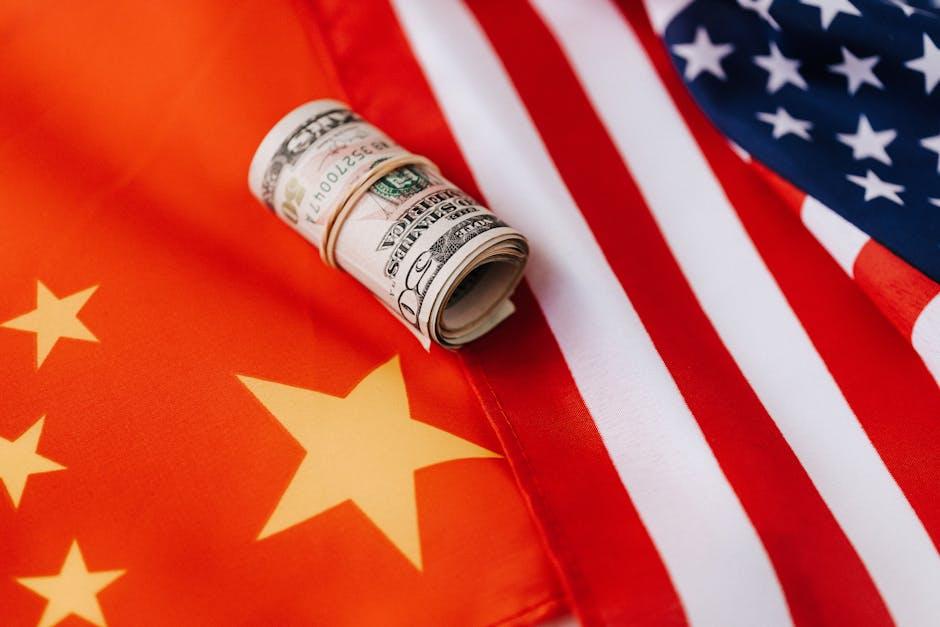In the intricate chessboard of international commerce, trade wars have emerged as powerful moves that ripple far beyond the immediate battlefield. These economic skirmishes, marked by tariffs, sanctions, and retaliatory measures, are no longer confined to the borders of the nations involved. Instead, their effects cascade through supply chains, financial markets, and consumer behavior worldwide. As countries navigate the complex dynamics of protectionism and globalization, the true impact of trade wars reveals itself in unexpected and profound ways. This article delves into the multifaceted consequences of these clashes, uncovering how the shifting tides of trade policies reshape the global economy and the lives it touches.
Table of Contents
- The Anatomy of Trade Wars and Their Root Causes
- Economic Dominoes Falling Across Borders
- Sector by Sector Breakdown of Trade Conflict Impacts
- Strategic Pathways for Navigating a Fragmented Global Market
- Wrapping Up

The Anatomy of Trade Wars and Their Root Causes
Trade conflicts often arise from a complex interplay of economic and political factors rather than mere tariff adjustments. At their core, trade wars are battles over market dominance, national security concerns, and the desire to protect vital industries. When countries impose tariffs or quotas, they’re essentially using economic tools to assert power or respond to perceived unfair practices such as intellectual property theft, currency manipulation, or imbalanced trade deficits. These root causes are deeply embedded in geopolitical rivalries and economic nationalism, making resolutions challenging and protracted.
Several recurring triggers destabilize international trade relations including:
- Strategic Resource Competition – Nations vie for control over essential raw materials affecting manufacturing and technology sectors.
- Protectionism – Shielding domestic jobs and industries from global competition under populist pressure.
- Technological Leadership – Competition to dominate emerging tech markets, leading to restrictive trade policies.
| Root Cause | Impact | Typical Response |
|---|---|---|
| Trade Deficit Concerns | Currency tensions, market instability | Imposition of tariffs, currency controls |
| Intellectual Property Theft | Loss of innovation advantage | Trade restrictions, sanctions |
| Industrial Competition | Job losses, regional economic shifts | Subsidies, local content rules |

Economic Dominoes Falling Across Borders
In an intricately woven global marketplace, tariffs and embargoes act as triggers, setting off a chain reaction that transcends borders with startling velocity. When one nation decides to erect economic barriers, its immediate neighbors often face unforeseen consequences: supply chains glitch, production costs soar, and investment climates grow uncertain. This cascade effect doesn’t merely stall exports or inflate prices within a single country—it reshapes international alliances and compels multinational corporations to reconsider their long-term strategies. What begins as a conflict between two economies soon morphs into a widespread phenomenon affecting markets thousands of miles away.
Key impacts ripple through interconnected economies, such as:
- Shifts in currency valuation as investors seek safe havens, influencing exchange rates globally.
- Disruptions in raw material flows causing manufacturing delays and cost volatility.
- Emergence of alternate trade partnerships, accelerating regional economic blocs.
| Region | Primary Effect | Economic Reaction Time |
|---|---|---|
| Asia-Pacific | Export Diversification | 3-6 Months |
| Europe | Supply Chain Realignment | 6-9 Months |
| North America | Import Cost Inflation | 1-3 Months |

Sector by Sector Breakdown of Trade Conflict Impacts
Trade conflicts seldom impact the global economy uniformly; instead, each sector weaves its own narrative of challenges and adaptations. Manufacturing industries, for example, experience the brunt of tariffs through increased production costs and disrupted supply chains, leading to a recalibration of global sourcing strategies. Meanwhile, technology firms grapple not just with tariffs but also restrictions on data flows and intellectual property concerns, which complicate international collaborations and innovation pipelines.
On the other hand, the agriculture sector often faces immediate consequences from retaliatory tariffs, which can shrink export markets overnight and force producers to pivot to domestic or alternative international buyers. The service sector, including finance and tourism, encounters more indirect yet profound effects—ranging from currency fluctuations to shifts in consumer sentiment.
| Sector | Primary Impact | Adaptation Strategy |
|---|---|---|
| Manufacturing | Increased Tariffs & Supply Chain Disruption | Diversifying Suppliers & Reshoring |
| Technology | Intellectual Property Restrictions | Forming Regional Alliances |
| Agriculture | Export Market Losses | Exploring New Markets |
| Services | Currency Volatility & Demand Shifts | Enhanced Risk Management |

Strategic Pathways for Navigating a Fragmented Global Market
In an increasingly segmented global economy, businesses must adopt agility and foresight to stay afloat. Diversification of supply chains emerges as a cornerstone strategy—reducing dependency on specific regions shields firms from localized disruptions and trade policy shifts. Moreover, nurturing relationships with emerging market partners can unlock new avenues for growth, offsetting losses from traditional trade strongholds. Leveraging digital platforms to expand market reach also allows companies to pivot quickly in response to shifting geopolitical tensions.
At the operational level, investing in technological innovation and data analytics can enhance predictive capabilities, enabling quicker adaptation to evolving trade landscapes. Below is a simplified overview of crucial approaches businesses are employing:
| Strategic Focus | Key Actions | Expected Impact |
|---|---|---|
| Supply Chain Flexibility | Multi-source procurement, localized inventory hubs | Reduced disruption risk |
| Market Diversification | Exploring emerging economies, digital market penetration | New revenue streams |
| Technological Integration | AI-driven forecasting, real-time data monitoring | Enhanced responsiveness |
Wrapping Up
As the dust of trade conflicts continues to settle, the intricate web of global commerce reveals both vulnerabilities and unexpected resilience. Trade wars, far from isolated skirmishes, ripple across borders, touching markets, industries, and societies in complex ways. Understanding these dynamics is crucial—not just for policymakers and businesses, but for every individual linked to this vast economic ecosystem. In navigating the unfolding challenges and opportunities, one truth stands clear: in an interconnected world, no nation is an island, and the echoes of trade tensions remind us of our shared fates on the global stage.



